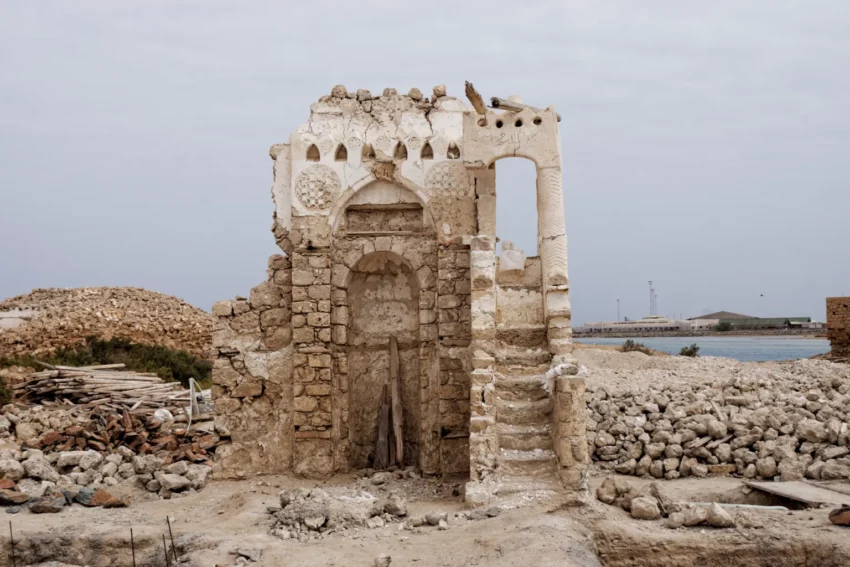Suakin Island, once a bustling port on the Red Sea, is a site of rich historical significance. Located in northeastern Sudan, it served as a key player in trade and pilgrimage routes for centuries. The island’s strategic position made it a focal point for commerce between Africa, the Middle East, and beyond. Today, Suakin stands as a testament to its past, with ruins that whisper stories of bygone eras, cultures, and civilizations that once thrived there.
Get your dose of History via Email
Historical Background of Suakin Island
Discovered by the outside world in antiquity, Suakin Island’s history is deeply intertwined with the region’s trade and maritime activities. The island was known to the ancient Egyptians and Greeks, and later became a prominent port in the Islamic era. It was the Ottomans who, in the 16th century, recognized Suakin’s potential and fortified it, leaving behind many of the structures seen today. Suakin was a hub for Muslim pilgrims heading to Mecca, and its harbor welcomed countless travelers and traders.
Who built Suakin is a tale of many hands and eras. The indigenous Beja people first settled there, and their influence is evident in the island’s early history. As trade flourished, so did Suakin, with various rulers and cultures leaving their mark. The island’s architecture, a blend of African, Ottoman, and Arab influences, reflects its diverse past. The Portuguese attacked Suakin in the 16th century, but it was the Ottoman Empire that truly shaped its destiny.
Later, Suakin Island became part of the Egyptian Khedivate and eventually fell under British control. During these times, it continued to serve as a vital trade and pilgrimage stop. However, the construction of Port Sudan in the early 20th century led to Suakin’s decline. The new port, with better facilities, drew away the maritime traffic that had been Suakin’s lifeblood.
Historically important events have unfolded on Suakin Island. It was here that the legendary Turkish governor and military leader, Osman Digna, rallied against British forces in the late 19th century. Suakin was also a stage for the Mahdist War, a significant conflict in Sudanese history. These events have cemented Suakin’s place in historical narratives, not just as a commercial hub but also as a site of resistance and struggle.
Despite its fall from prominence, Suakin Island remains a symbol of Sudan’s rich history. Its ruins, though in need of preservation, offer a window into the past. They tell stories of a time when Suakin was a gateway between continents, a melting pot of cultures, and a witness to the ebb and flow of empires.
About Suakin Island
Suakin Island is a treasure trove of historical architecture, with buildings made from coral blocks, a material abundant in the Red Sea. This unique building method is a hallmark of Suakin’s construction, giving the structures their distinctive appearance. The coral was cut into blocks and used to erect buildings, mosques, and fortifications, many of which still stand, albeit in ruins.
The island’s architectural highlights include the Al-Geyf mosque, with its intricate minaret, and the remnants of Ottoman-era houses. These structures showcase a blend of local and Ottoman architectural styles, with ornate wooden balconies and beautifully carved doors. The use of coral as a building material not only reflects the island’s maritime heritage but also its adaptation to the local environment.
Over the years, Suakin’s buildings have suffered from neglect and the harsh coastal climate. However, efforts are underway to preserve what remains of this once-thriving port city. The island’s unique construction methods and materials make it an important site for studying historical building techniques in the Red Sea region.
One of the most notable features of Suakin is its defensive wall, which encircled the town, protecting it from invaders. The wall’s remnants, along with the fort, bear witness to Suakin’s strategic importance and the need to defend its prosperous trade from external threats.
Today, visitors to Suakin Island can explore the ruins and imagine the bustling streets, markets, and harbor that once made this island a jewel of the Red Sea. The blend of architectural styles, from the simple homes of traders to the grandeur of mosques, tells a story of a cosmopolitan center that welcomed people from all corners of the world.
Theories and Interpretations
Several theories surround Suakin Island, particularly regarding its role in regional trade and politics. Some historians suggest that Suakin was more than just a commercial hub; it may have been a cultural and intellectual center, where ideas were exchanged along with goods. The presence of scholars and pilgrims passing through supports this theory.
There are mysteries about Suakin, too, such as the exact origins of some of its architectural features. While the use of coral is well-documented, the influences and techniques behind some buildings are still debated. Researchers strive to match the island’s structures with historical records to gain a clearer understanding of its past.
Dating the ruins and artifacts found on Suakin Island has been a challenge. Carbon dating and other archaeological methods have been employed to establish timelines. These efforts have provided insights into the various stages of Suakin’s development and the peoples who inhabited it.
Interpretations of Suakin’s history often reflect the broader historical narratives of the Red Sea region. The island’s story is seen as part of the ebb and flow of empires, trade routes, and the spread of religions. Suakin’s decline, too, is interpreted within the context of changing trade dynamics and the advent of modern ports.
Ultimately, Suakin Island remains a subject of fascination for historians and archaeologists. Its layered history, with periods of prosperity and decline, continues to be pieced together through ongoing research and interpretation.
At a glance
Country: Sudan
Civilization: Indigenous Beja, followed by Egyptian, Ottoman, and British influences
Age: Inhabited since ancient times, with significant development from the 16th century AD
Conclusion and Sources
Reputable sources used in creating this article include:
- Wikipedia: https://en.wikipedia.org/wiki/Suakin

